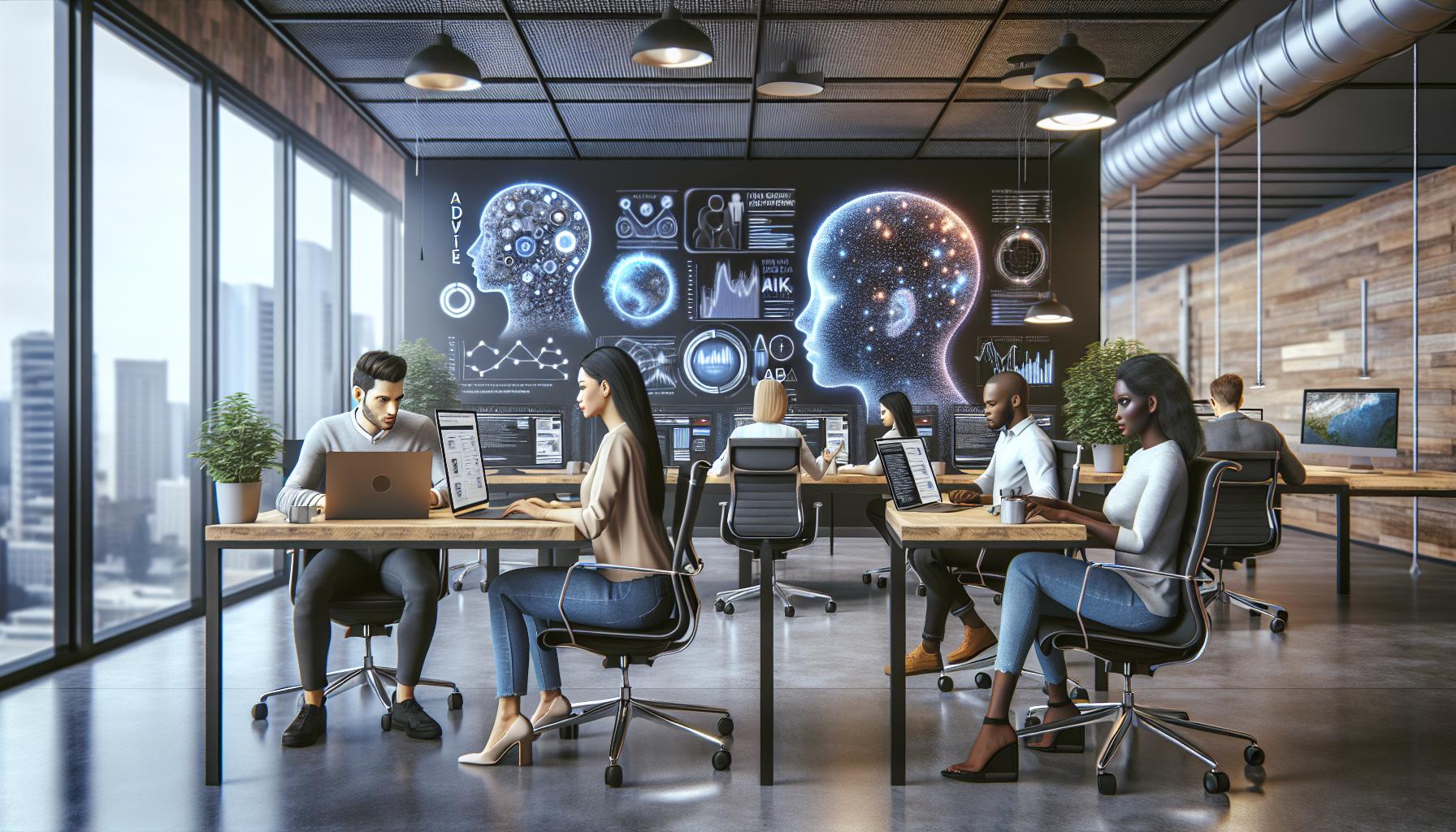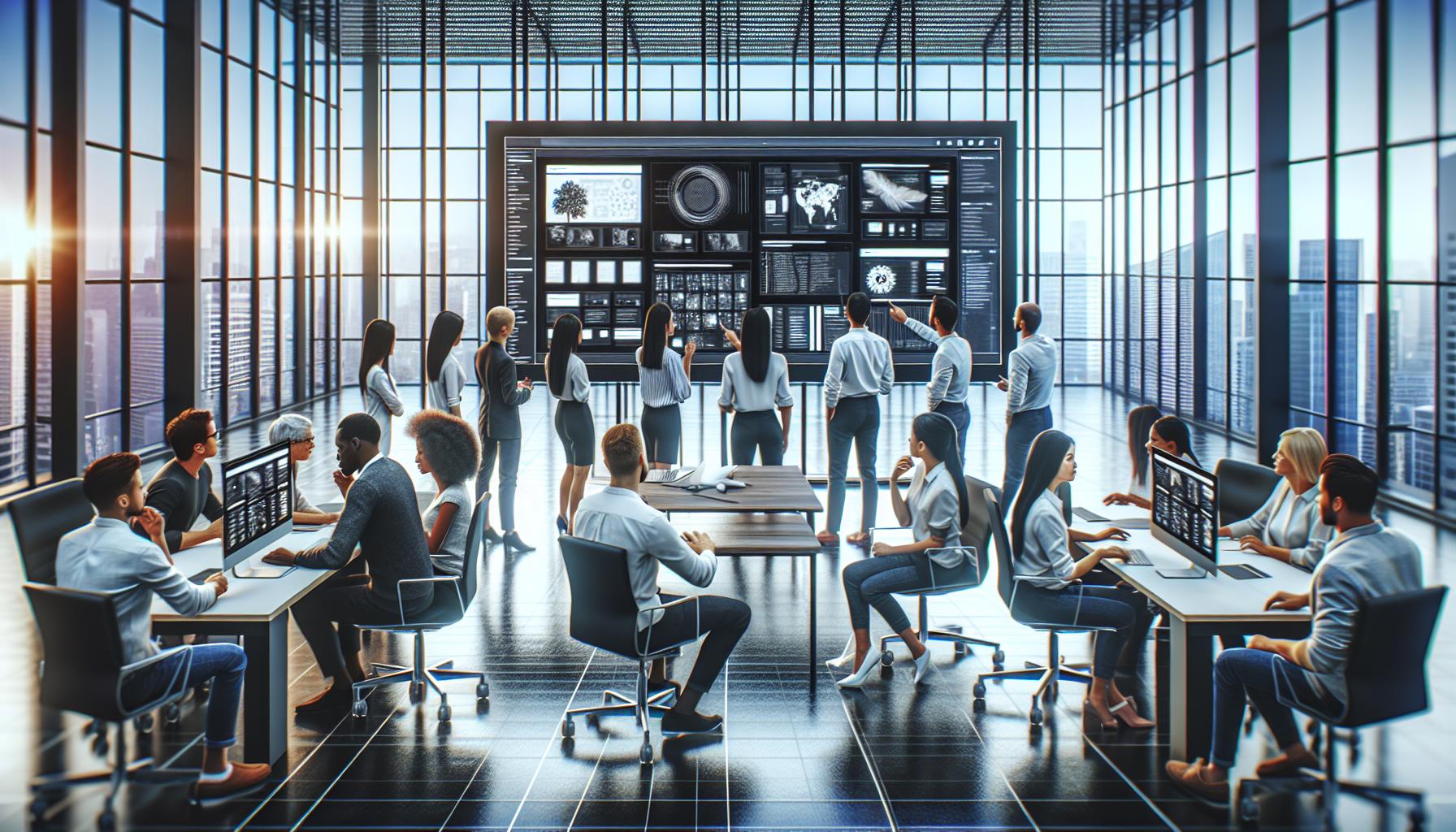Key Takeaways
- Revolutionizing Web Design: AI web design streamlines the creation and management of websites, improving efficiency and enhancing user experiences through tailored solutions.
- Enhanced User Experience: Utilizing AI algorithms, designers can personalize websites based on user behavior and preferences, leading to higher satisfaction and increased conversion rates.
- Increased Efficiency: AI tools automate repetitive design tasks, allowing designers to focus on creativity and innovation, significantly reducing project timelines and costs.
- Challenges to Address: Despite its advantages, AI in web design faces technical limitations related to data availability and integration challenges, as well as ethical concerns regarding user privacy and algorithmic biases.
- Future of Personalization: The push for hyper-personalization is shaping the future of AI web design, enabling uniquely tailored experiences that anticipate user needs.
- Integration with Emerging Technologies: AI’s integration with technologies like AR, VR, and IoT will enhance user engagement and create immersive digital experiences, fostering greater interaction across platforms.
In today’s digital landscape, AI web design is revolutionizing how businesses create and manage their online presence. By harnessing the power of artificial intelligence, designers can streamline processes, enhance user experiences, and craft visually stunning websites that adapt to individual needs. This innovative approach not only saves time but also opens up new possibilities for creativity and functionality.
As technology continues to evolve, the integration of AI in web design is becoming essential for staying competitive. From automated layout generation to personalized content recommendations, AI tools are enabling designers to work smarter, not harder. Understanding the impact of AI on web design will empower businesses to leverage these advancements and create websites that truly resonate with their audience.
AI Web Design
AI web design refers to the application of artificial intelligence technologies to streamline and enhance the web design process. It allows for quicker, more efficient website creation while improving user engagement and satisfaction.
AI tools tackle several aspects of web design, including layout generation, color schemes, font choices, and image selection. They analyze user data to tailor designs that align with target audiences. AI also automates repetitive tasks, freeing designers to focus on creative aspects.
Designers utilize AI-powered platforms to generate prototypes based on user preferences. These platforms can adapt layouts according to real-time user interactions, ensuring a responsive and personalized experience. Additionally, AI can optimize the website’s performance through predictive analytics, helping businesses make informed decisions.
Incorporating AI in web design reduces costs and accelerates project timelines. It enables continuous learning and adaptation, ensuring that websites evolve with changing user behaviors. The rise of AI-driven solutions reflects a broader trend towards personalization and efficiency in digital environments.
Benefits Of AI Web Design

AI web design offers numerous advantages, significantly improving website creation and management. Its impact spans enhanced user experiences and increased efficiency.
Enhanced User Experience
AI web design creates personalized user experiences by analyzing user behavior and preferences. It customizes layouts, content, and visuals to match individual tastes. For instance, AI algorithms can suggest relevant products based on browsing history, increasing engagement and conversion rates. Additionally, adaptive design ensures websites perform optimally across various devices. This attention to user needs leads to higher satisfaction and retention rates.
Increased Efficiency
AI technologies streamline web design processes, reducing the time and resources required for project completion. Automated tools generate layouts, select color schemes, and propose font combinations, allowing designers to concentrate on creative tasks. For example, AI-driven platforms can produce multiple design iterations instantly, facilitating quicker decision-making. Predictive analytics also enable businesses to anticipate user preferences, enabling proactive enhancements to website features. Overall, AI accelerates development time and improves resource allocation, driving productivity further.
Challenges Of AI Web Design

AI web design faces several challenges, impacting its effectiveness and acceptance. These challenges include technical limitations and ethical considerations that need addressing.
Technical Limitations
Technical limitations in AI web design can hinder performance and user experience. AI algorithms require vast amounts of data to improve accuracy, which may not always be available. For example, insufficient datasets lead to less effective design recommendations or errors in layout generation. Additionally, the complexity of integrating AI tools into existing web development workflows can create complications. Compatibility issues with legacy systems may arise, slowing down implementation and generating frustrations among design teams. Various AI tools may also struggle with responsiveness across different devices, compromising user experience.
Ethical Considerations
Ethical considerations play a significant role in AI web design. The use of AI raises questions about data privacy and user consent. Websites collecting user data must ensure compliance with regulations like the General Data Protection Regulation (GDPR). Failure to address user privacy may damage trust and harm brand reputation. Moreover, biases inherent in AI algorithms can lead to exclusionary design practices. If AI tools are trained on skewed data, the resulting designs may cater only to specific demographics, neglecting others. Transparency in how AI systems operate and make design decisions is essential to maintain ethical standards and build user confidence.
Future Trends In AI Web Design

AI web design is entering a new phase, marked by increasingly sophisticated applications that enhance user experiences and streamline workflows. Innovative trends are shaping the future of AI in web design, focusing on personalization and integration with other technologies.
Personalization
Personalization remains a cornerstone of AI web design. AI-driven algorithms analyze user behavior patterns, preferences, and demographics, allowing for the creation of uniquely tailored experiences. Websites can dynamically adjust layouts, content, and visuals based on individual user data, resulting in higher engagement rates. For instance, e-commerce websites showcase products based on past purchases and browsing behavior, increasing conversion opportunities. As AI evolves, the push for hyper-personalization intensifies, where each visitor’s experience is not only tailored but anticipates needs before they arise.
Integration With Other Technologies
Integration with other technologies will enhance the capabilities of AI web design. As AI systems merge with advanced tools like augmented reality (AR) and virtual reality (VR), web design teams can create immersive experiences that captivate users. For example, AR elements in product showcases allow customers to visualize items in their environments before purchasing. Furthermore, the combination of AI with Internet of Things (IoT) devices facilitates responsive web design that adapts to user interactions through smart technologies. This synergy elevates the overall user experience and encourages greater interaction across platforms, creating a more cohesive digital environment.
The Integration of AI Tools
AI web design is reshaping the landscape of online presence creation. By harnessing advanced technologies businesses can achieve faster and more efficient website development while significantly enhancing user experiences. The ability to personalize content and design based on user data not only boosts engagement but also drives conversion rates.
As the industry evolves the integration of AI tools will become indispensable. Businesses that embrace these innovations will likely stay ahead of the competition. However it’s essential to navigate the challenges that come with AI implementation including ethical considerations and technical limitations.
The future of web design lies in the seamless blend of AI with emerging technologies. This synergy promises to create immersive and responsive digital experiences that cater to individual user needs. Adapting to these changes will be key for businesses aiming to thrive in a rapidly changing digital world.